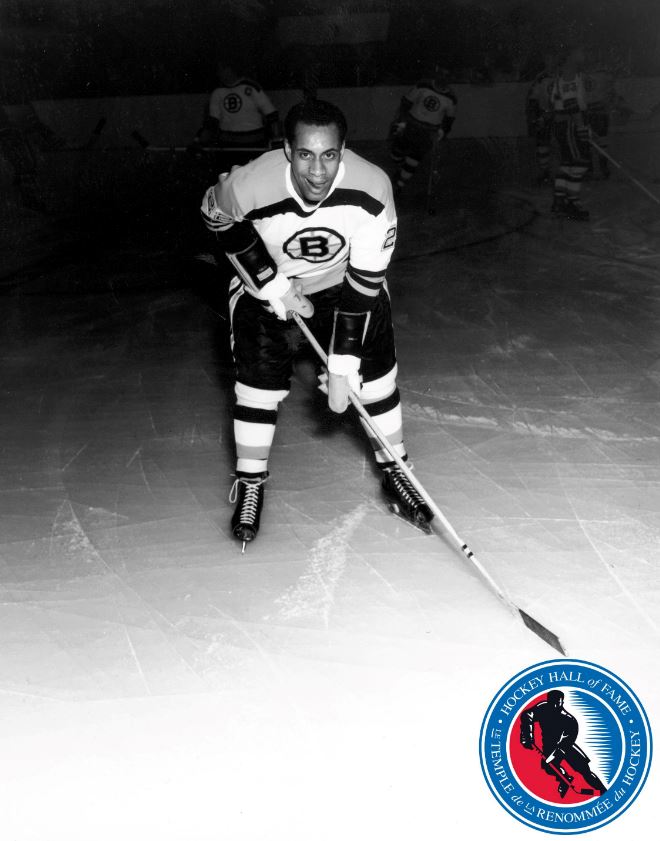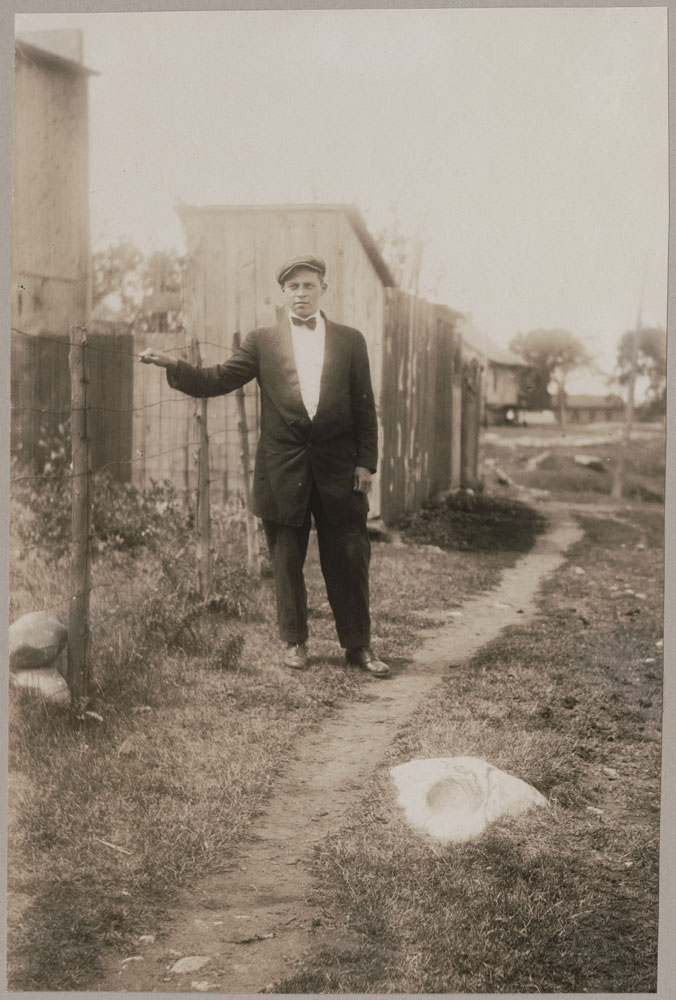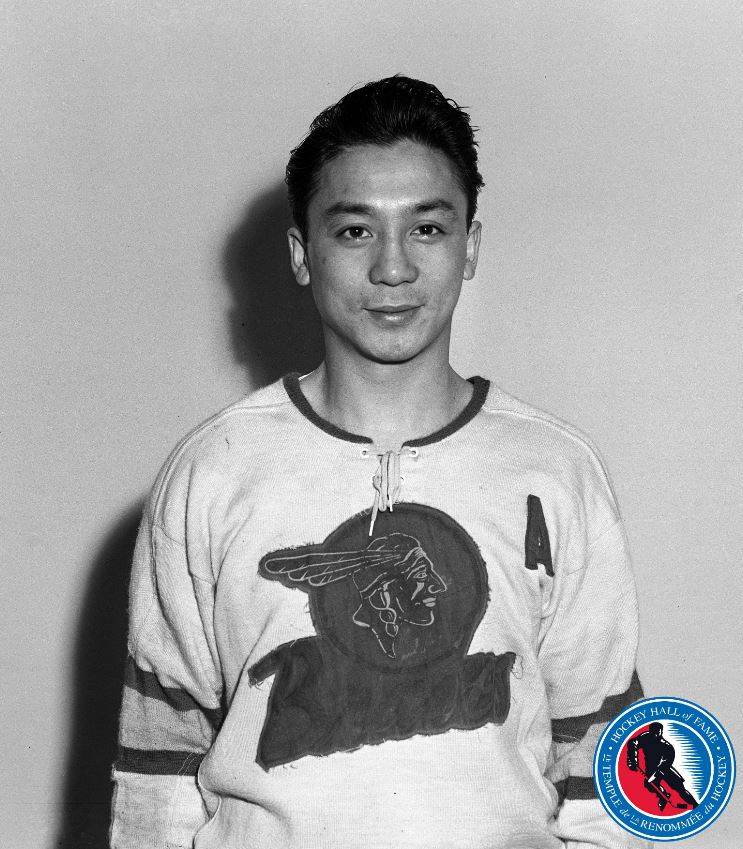Breaking Racial Barriers in the National Hockey League National Historic Event

Breaking racial barriers in the National Hockey League was designated a national historic event in 2022.
Historical importance: Hockey players overcoming racial barriers in professional hockey.
Commemorative plaque: Address to be confirmedFootnote 1
Breaking Racial Barriers in the National Hockey League
Since the establishment of the National Hockey League in 1917, non-white athletes faced racial barriers, preventing them from playing in the league. In the early decades of the NHL, men such as Paul Jacobs, Henry “Elmer” Maracle, Larry Kwong, Fred Sasakamoose, and Willie O’Ree confronted widespread racism and prejudice on and off the ice. These players broke through racial barriers at each stage of their careers, ultimately reaching hockey’s premier league. Representing greater diversity and inclusion in professional hockey, these trailblazers were recognized for both their skill and perseverance, inspiring future generations of players.

© Hockey Hall of Fame. All right Reserved. Images are subject to copyright and cannot be copied or reproduced without formal confirmation from the Hockey Hall of Fame.

© Hockey Hall of Fame. All right Reserved. Images are subject to copyright and cannot be copied or reproduced without formal confirmation from the Hockey Hall of Fame.
Breaking Racial Barriers in the National Hockey League
Since the establishment of the National Hockey League (NHL) in 1917, athletes have faced racial barriers, including widespread, systemic, and open racism on and off the ice, that have prevented them from playing in the league. Paul Jacobs, Larry Kwong, Henry “Elmer” Maracle, Fred Sasakamoose, and Willie O’Ree were five players who broke through racial barriers at each stage in their career, and ultimately reached hockey’s premier league during the NHL’s early decades and beyond. These hockey players came from different parts of Canada and from a range of communities, including Black, Chinese Canadian, and Indigenous communities. Representing greater diversity and inclusion in professional hockey, these trailblazers were recognized for both their skill and perseverance, inspiring future generations of players.

© F. W. Waugh/Library and Archives Canada/R. F. Waugh collection/e011310538-020_s1/Copyright: Expired
After the formation of the NHL in 1917, a nationwide network of developmental teams and leagues emerged, eventually becoming a controlled feeder system that directed players to the NHL. While hockey was played and enjoyed by Canadians of all backgrounds, racial discrimination and prejudice existed in player development programs across Canada. This limited who could advance to play in professional leagues. There are a few examples of players that broke hockey’s ultimate racial barrier in the pre-1930 era, including Paul Jacobs, a defenceman from Kahnawá:ke who appeared on the Toronto Arenas’ NHL roster during the 1918–19 season. In general, however, the hockey structure that came to be defined by the NHL was closed to racialized Canadians and Indigenous Peoples and, despite there not being an official rule of exclusion, the NHL consisted of almost exclusively white players through its early years.
Depending on where they were in Canada, some racialized and Indigenous athletes played hockey in separate leagues, on segregated teams, like the Colored Hockey League of the Maritimes (CHL), founded in Halifax in 1895, or at residential schools, where many Indigenous children learned to play hockey. Yet neither option fed into the NHL system. This limited both the opportunities to play at the highest level and perpetuated the status quo, reinforcing the idea that racialized Canadians and Indigenous Peoples did not belong in the NHL. It was this exclusionary culture that players had to confront on their path to the NHL.
Some racialized and Indigenous players did, however, break through these racial barriers to play in hockey’s greatest league, demonstrating their elite skill and perseverance. These included Henry “Elmer” Maracle, also known as “Buddy,” who played 15 games for the New York Rangers during the 1930–31 season. Maracle, who was Haudenosaunee from Six Nations of the Grand River, scored one goal and three assists that season, which was his only year in the NHL. On 13 March 1948, Larry Kwong, a Chinese Canadian from Vernon, British Columbia, also made his NHL debut for the New York Rangers. Five years later on 23 November 1953, Fred Sasakamoose, a member of the Ahtahkakoop Cree Nation in Saskatchewan and a survivor of the residential school system, played his first NHL game for the Chicago Blackhawks. It was another five years before Willie O’Ree of Fredericton, New Brunswick, became the first Black player in the NHL, debuting for the Boston Bruins on 18 January 1958. O’Ree played two seasons in the NHL, scoring 14 points in 45 games.

© Hockey Hall of Fame. All right Reserved. Images are subject to copyright and cannot be copied or reproduced without formal confirmation from the Hockey Hall of Fame.

© Hockey Hall of Fame. All right Reserved. Images are subject to copyright and cannot be copied or reproduced without formal confirmation from the Hockey Hall of Fame.
When players did make it to the league, they were regularly subjected to racial taunts from teammates, opponents, and fans. This was also the case for racialized fans, who typically did not find a welcoming environment at NHL games. While these trailblazing players’ achievements inspired millions of players who followed in their steps, their careers did not bring about systemic change, and the league continued to struggle with diversity and inclusivity. In recent years, efforts have been made to make the game of hockey more inclusive.
This press backgrounder was prepared at the time of the Ministerial announcement and plaque unveiling in 2022.
The National Program of Historical Commemoration relies on the participation of Canadians in the identification of places, events and persons of national historic significance. Any member of the public can nominate a topic for consideration by the Historic Sites and Monuments Board of Canada.
- Date modified :